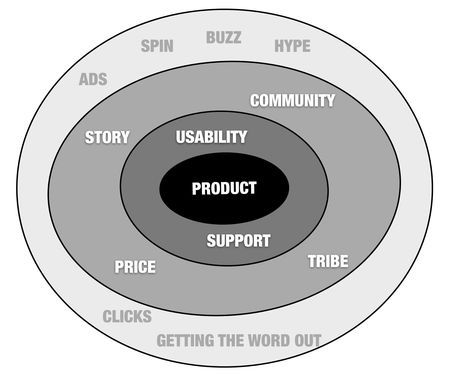20+ Valuable Marketing Quotes and Insights From Experts (1 of 2)
Curious to learn what the latest valuable marketing quotes and insights are?
Marketing never stops spinning and marketers never stop learning. To help you update your knowledge and show you new directions, I put together a list of 20+ marketing quotes and insights from 20 marketing experts.
This article includes insights and quotes from Ann Handley, Jay Baer, Chris Brogan, Rand Fishkin, Tara Hunt, Seth Godin, Mark Schaefer, Martin Lindstrom, Mari Smith and Gary Vaynerchuk.
20+ Valuable Marketing Quotes and Insights From Experts
1. Ann Handley – Go Smaller & Slay the Ignosaurus
We’ve all heard of the Go big or go home saying. Writer, speaker and digital marketing pioneer Ann Handley makes a 180 turn and goes in the opposite direction. She invites marketers to thing bigger, but go smaller. Why?
Small stories are specific. Small stories are human-scale.
Ann Handley
Making the story smaller and more specific is the best way for products, services or B2B solutions to break through the noise of social media and get listened to by their customers.
Big and bold stories are often best told in small and specific ways. Find the specific details—and use them to engage the heart, not just appeal to the head.
Ann Handley
But in order to be able to tell these stories, we need to slay the Ignosaurus, the beast that we thought had disappeared together with the other dinosaurs.
Ignosaurus is lazy, bored, and goes through the motions with no engagement on the job.
Ann says a vast majority of marketers today are Ignosaurus in disguise.

annhandley.com
She wants marketers to slay the Ignosaurus within and start experimenting, making changes.
In order for the industry to evolve marketers need to be curious and stay alert.
Study after study has shown that Marketing has one of the most pronounced skills gap of any industry. Many of us feel that we don’t have the skills we need to produce our best work.
Ann Handley
2. Jay Baer – Relevancy is a Value Exchange
Is your marketing failing?
Author, speaker and founder of Convince & Convert Consulting Jay Baer believes the reason your marketing is failing is the lack of relevancy.
Customers and prospects are trading their attention for your information. If they refuse to do so, it’s because your information does not matter to them enough sufficiently for them to trade attention for that information.
The key to being more relevant isn’t hard-it just takes time. The key to being more relevant is to understand your customers better.
The truth is that most modern marketers don’t actually interact with customers very much anymore, and that robs us of a really important success ingredient: insights.
Jay Baer
How do you get insights?
Not from reading spreadsheets or reports.
Jay says most marketers today have never seen their customers which is really sad.
How can you design marketing strategies and campaigns if you don’t know who are you talking to?
You need to change that today.

Leave the office and make contact. Spend time with your customer service and your sales team to learn what your customers’ problems are, what questions they ask, how they talk etc.
Almost no great marketing happens behind your desk. Great marketing occurs when you actually take the time to spend time with your customers and learn what they really need and what they’re really all about.
Jay Baer
3. Chris Brogan – Invite People to Your Picnic
I think even the biggest companies have to get a bit more “picnic-sized” in their looking at outreach, attraction, sales, and conversion. If you speak to everyone, you’re heard by no one. Sure, make your big ads say whatever they’re saying, but use your other resources to reach and engage with specific groups at a time.
Chris Brogan
How can a company reach people and serve those who would benefit from their services and products?
Speaker, author and marketing expert Chris Brogan says marketers need to make their customers feel seen and understood. Only then will they be ready to buy.
How do you make your customers feel seen and understood?

You need to split your customers into several communities of personas. Make groups for every community of people you think you can best serve. And then invite them to a picnic, online or offline and make them feel they belong. That’s how revenue is generated – by earning the attention and trust of all those people out there who feel invisible.
4. Rand Fishkin – The True Marketing Trends for 2019
Former founder of Moz and current founder of SparkToro Rand Fishkin believes marketing trends like video content, turning to the human side of marketing and data-driven creativity are completely non-actionable and can hardly be called trends for 2019.
Instead, he made a list of the trends he believes will have an impact on marketing in 2019.

Here they are:
- In the next few years, the US and other parts of the world will experience an economic recession which is already changing customers’ behaviour;
- The undue influence of big businesses and monopolies which resulted in bad news for citizens: GDPR, the loss of Net Neutrality, Articles 11 and 13;
- A recent analysis showed a dramatic slowdown in the global growth of internet access. To keep making the same revenue as in past years, most internet giants compete with publishers, limit organic reach, cannibalize clicks and make channels pay-to-play;
- Voice Answers have the potential to disrupt any competitive opportunity to appear in results and earn traffic and value;
- The emerging, broad societal belief that overuse of social networks and heavy web content consumption do more harm than good. Many people today are limiting their screen time and their children’s.
What steps is your company taking to adapt to the future?
5. Mark Schaefer – The Belonging Crisis
Author, speaker and marketing expert Mark Schaefer says
Most of our marketing is occurring without us because today the customers are the marketing department. The new challenge for a company is to be invited to those organic conversations.
We live in an era when hyper-empowered consumers control the brand narrative.
In the past, a “brand” is what we told our consumers. Today, a brand is what our customers are telling each other.
Mark believes there is a belonging crisis today in the world.

Here is what marketers should do to help companies overcome this trend according to Mark:
- Align with the values of your young customers, empowering their voices, and creating deep emotional attachments with customers that result in loyalty;
- Help your customers feel connected;
- Provide personal attention to your customers. “It’s not “personalized” — it’s personal!”
- Nurture like-minded customer “islands” on Facebook and other spaces;
- Use true personal connections instead of automated messages and spammy responses;
- Traditional ads that lead to “awareness, trial and loyalty” don’t work so well any more. Build a brand from a place of empathy and personal pain;
- Assemble a tribe, united in their belief in how the product or service connects them to their individual lives and to their communities.
6. Mari Smith – Use Stickers in your Facebook Video Ads
Often referred to as the Queen of Facebook, Mari Smith provides marketers with many valuable and useful insights on Facebook and Instagram marketing.
Stickers on videos can significantly improve the performance of your Facebook ads.
Mari Smith
Mari and her team performed a test to see how stickers influence the results of Facebook video ads.
Here’s what she found:
- Cost per result for ads with stickers was almost 33% lower;
- Both Conversion rate and CTR were higher;
- Stickers don’t impact interest in the ad copy so much as generate interest in the advertised product;
- If you are looking to use stickers in your Facebook video ads pay attention to the number of stickers you add, don’t overdo it!

7. Gary Vaynerchuk – The $1.80 Instagram Strategy
Gary Vaynerchuk spent the last 10 years of his career trying to understand user psychology and reverse engineer attention into an engaged community online.
The truth is, the way to win on social media is to actually be social. The number of Instagram followers you have means nothing if you can’t build a community of like-minded people who care and engage. The only real way to do this from scratch is to become part of the conversation.
Gary Vaynerchuk
That’s how he came up with the $1.80 Instagram strategy.
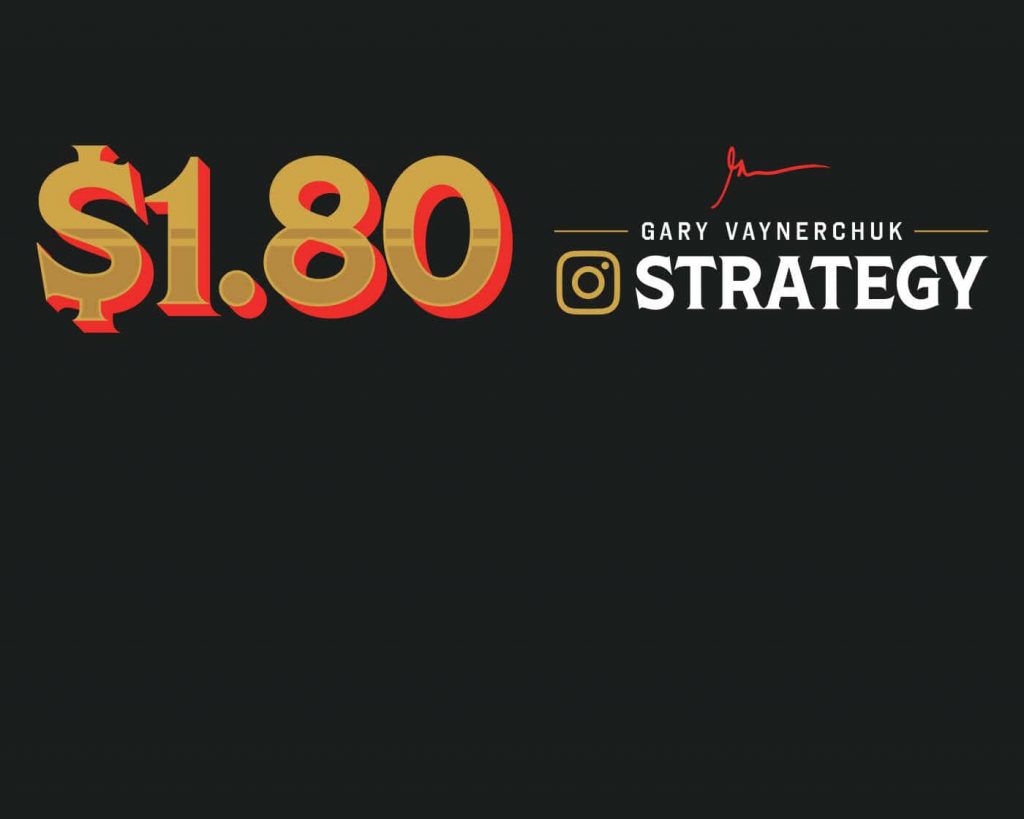
garyvaynerchuk.com
What is the $1.80 Instagram strategy?
It’s leaving your personal .02 cents on the top 9 trending Instagram posts for 10 different hashtags that are relevant to your brand or business every single day.
All you need to do is provide value where you can and it only takes 2 minutes a day. He says it’s exactly the strategy that always worked for him – becoming part of the community. The result is you will have meaningful connections, not bots. And this kind of connections is the most valuable.
8. Tara Hunt – No, that’s not marketing
Executive-level digital marketing professional Tara Hunt makes it clear on what marketing is not.
Contrary to popular believe, advertising isn’t the same as marketing. PR is not the same as marketing. Communications isn’t the same as marketing and Branding isn’t the same as marketing either. Even Sales is often completely separate from marketing. Brand and advertising and PR and content and digital and consumer insights and pricing and social and events and product and positioning and communications and a whole bunch of other stuff are all part of the marketing toolkit, but they aren’t “marketing.”
Tara Hunt
Videos, podcasts and content, in general, are great tactics for the right audience but they’re not marketing. They won’t automatically open the floodgates of customers.
Here’s what marketers should do according to Tara:
- Understand their market;
- Understand if they have the right product for that market (if not, let their client know they are focusing on the wrong market or need to change the product);
- Identify the right channels of distribution for both product and message;
- Put it all together in a measurable plan.
Anything less is not marketing.
9. Seth Godin – 10 words per page
Seth Godin is the only person to have been inducted in the Direct Marketing Hall of Fame and the Marketing Hall of Fame. His blog is one of the most successful blogs in the world with 7000 published articles and millions of readers.
We are also proud that Seth Godin was one of the keynote speakers at BRAND MINDS 2017.
Here are 4 insightful quotes:
Any metric you can buy your way out of is probably not a useful metric to measure yourself by.
![]()
Every interaction you have with a customer either strengthens your relationship (because it’s mutually beneficial) or weakens it. Weaken it enough time and you break it.
Ten words per page
That’s how many words get scanned the first time through. Perhaps five on a billboard.
Which means that your memo, your ad, your announcement, your post–you get ten words.
If you can begin with the ten words and write around them, you have the foundation for an effective message.
When in doubt, when your marketing isn’t working, the answer is easy: go one circle in.
seths.blog
10. Martin Lindstrom – Build Anticipation
Neuromarketing and branding expert Martin Lindstrom draws attention to the concept of anticipation.
Anticipation is the feeling of excitement about something that is going to happen in the near future. It is a powerful feeling and it is directly linked to connectedness and engagement over a longer period of time.

In our world of on-the-spot gratification, how are brands leveraging anticipation to keep their customers close and engaged? Technology has taken anticipation away.
From a rational point of view, anticipation is nothing more than an illusion, a myth, a chimaera; but from a subconscious, storytelling, and emotional point-of-view, anticipation makes all the difference. It is the bride’s months-long excitement as she chooses her gown, the anxious lead-up to graduation day, the indescribable feeling as the newborn baby finally arrives home and settles into its beautifully decorated bedroom.
Martin Lindstrom
If your brand offers experience, anticipation plays an important role in your customers’ perception of it. Anticipation has the power to make the wait much more rewarding and it makes all the difference. It sets your brand apart from your competitors and influences the bottom line.
Stay tuned for part 2!
Join the Conversation
We’d love to hear what you have to say.
Get in touch with us on Facebook Group and Twitter.
Daniel Dines (UiPath) – 3 Insights for Startup Growth
Daniel Dines is co-founder & CEO of Romanian Unicorn startup UiPath, currently valued at $7billion.
Check out the video to find out his insights for startup growth:
Join the Conversation
We’d love to hear what you have to say.
Get in touch with us on Facebook Group and Twitter.
How Can Location Data Help You Grow Your Business
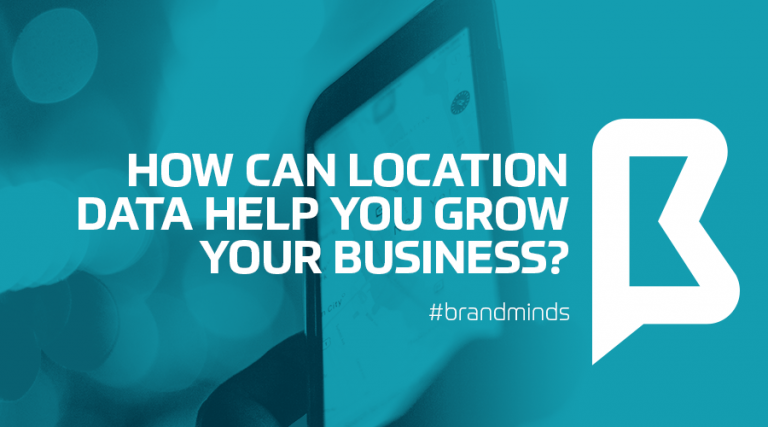
The importance of data is growing daily and its impact on the businesses as well. Gathered and used in smart ways it can help you reach the right audience, in the right way. In other words, it’s a known fact that location intelligence has become a fundamental part of some of the most successful businesses in the world today. Tough economic times and the advancement of new technology in recent years have massively pushed the need for businesses to gain more transparent and competitive insights on their performance and opportunities.
According to geovation.uk, location provides meaningful context. It can identify essential relationships between geography and consumer experiences, products and services. Location intelligence answers important questions, such as ‘where are my most valuable customers?’, ‘where are the issues impacting my supply chain?’ Location intelligence can detect clusters and patterns of events, make predictions, and provide the basis on which to make better business decisions.
Knowing the location of users, employees and company assets is becoming a vital part of many businesses in order to act efficiently and make informed decisions. From helping customers locate relevant amenities (e.g. Foursquare, Tripadvisor) to logistics companies optimizing delivery routes (UPS, Hermes), location, spatial data and digital mapping are playing a pivotal role in these business functions.
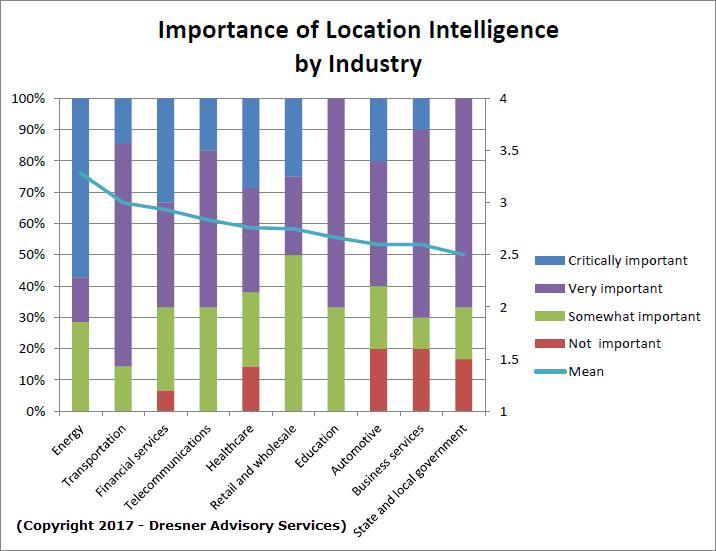
At the same time, location represents a great manner of revealing relationships between data sets that might not have otherwise been obvious and, through location analytics, arrive at great insights.
Worries about concerns like user privacy and data quality are valid: Know that it’s important to source location-informed insights from opt-in data that is thoroughly cleansed and, most importantly, aggregated and anonymized (the Location Search Association recently published a valuable landscape report analyzing the key providers in the space). Be sure to work with a data provider that adheres to emerging industry best practices, including use of data sourced only from apps with specific user opt-in (like Apple is now mandating), and complies with country-specific regulations, like GDPR. – entrepreneur.com
Data company Carto partnered with market research firm Hanover Research on a February 2018 study called “The State of Location Intelligence 2018,” surveying more than 200 C-level executives about the ways their companies are using location data to identify new consumer markets, improve marketing strategies and improve customer service. Here are some of their main findings:
- 66% of respondents said that Location Intelligence was “Very” or “Extremely” important today for their businesses, 78% said it would be in the next year, and 85% said it would be in the next three years.
- Only 27% said that they use any kind of custom geography and 17% use block groups. To understand location data, businesses must begin visualizing and analyzing at a deeper geographic level.
- Nearly all C-level and management level respondents,especially those from small to mid-sized organizations, note a strong likelihood to invest in Location
Intelligence within the next one (78%) to three years (84%). - Companies are very interested in finding data scientists that understand how to manipulate spatial data effectively, and conducting iterative spatial analysis is the most important step in applying Location Intelligence.
- “Ensuring data quality and accuracy” (49%), “gathering data real time” (40%), and “extracting data from existing systems in a usable way” (39%) are more commonplace challenges in terms of data collection.
Taking a closer look at these data, we can see for sure that if you know how to tap into the Location Intelligence right, your business can have a bright future and even expand, especially because many aren’t already using it at its full potential.
Therefore, how can you do more and be ahead of the rest? Entrepreneur.com is giving you some ideas:
- Use the big potential that research is offering you. “Location data can provide a stronger context of your target audience to better activate consumers. Beyond just marketing what you already have, it can also help reveal opportunities for products or services that you’ve not yet developed or marketed.”
- Competitive Intelligence. “This wealth of insight about where people go in the real world and, in particular, how they interact with your competition, is invaluable intelligence to your business and can help inform decisions about everything from pricing and inventory to in-store promotions and staffing levels.”
- Acquisition and investments. “Asset managers are increasingly turning to location data to inform their investments, according to a recent report from Optimas. Given this trend, location data should most definitely be part of your due diligence when evaluating any prospective investment or acquisition. Evaluate the foot traffic patterns in and around the business you’re considering and think about what it might reveal.”
More on the subject, tap here.
Inspirational study cases one can find in this Forbes article.
Marketing research done right
Either you start a new business, launch a new project / product / service or you just want to stay ahead of your competition, a strong and smart marketing research will give you the necessary advantage over the competition. Moreover, in this ever-changing and moving market, with the technology changing it day by day and with consumers always up-to- date and in control of the situation, research becomes more and more important daily. Therefore, market research is a key component of any good product team management process, sales and marketing strategy, or business growth strategy.
“Marketing research can give a business a picture of what kinds of new products and services may bring a profit. For products and services already available, marketing research can tell companies whether they are meeting their customers’ needs and expectations. By researching the answers to specific questions, small-business owners can learn whether they need to change their package design or tweak their delivery methods–and even whether they should consider offering additional services,” writes entrepreneur.com.
Research deserves its important place in a business activity and should be treated accordingly. We are presenting you some of the steps you must take in order to make sure your research is done right.

source: AdWeek
- Primary research focuses on gathering data from analyzing current sales and the effectiveness of current practices. It also takes competitors’ plans into account, giving you information about your competition. The pieces of information will be received following: interviews (qualitative and quantitative), surveys, questionnaires (online or by mail), focus groups.
2. Secondary research. Analyzing the data that has already been published. and that can help you identify competitors, establish benchmarks and identify target segments. Your segments are the people who fall into your targeted demographic–people who live a certain lifestyle, exhibit particular behavioral patterns or fall into a predetermined age group.
3. Study the Economy: Just like the history is important in knowing and understanding who we are as a culture and what we will be in the future, showing what we can expect, so is knowing and understanding the economy helping your business grow. You can better understand reports about some of the most important big factors affecting the industry you’re in and the customers you hope will spend their money on your products or services.
Being up-to-date with the economics world will help you know how to adjust your business, prevent difficult situations and choose the right time to expand.
4. Read Business and Industry Publications: Whatever your industry, there’s likely a trade group or research firm out there compiling industry statistics and trends that are all insights into your business. Join your industry trade group or follow key industry thought their leaders on social media and media (their TV, print, online appearances). Being part of the industry and its insights will help you find out detailed industry statistics and trends that can help you better understand the past, present and future of companies like yours.
5. Look Elsewhere: Take example from successful local and international businesses. A similar business on the opposite end of the country may give you some great promotional ideas, or an international market could start complaining about rising commodity prices before they affect you directly.
6. Hire a smart internal researcher and a good research agency. Your researcher will be able to present you monthly reports regarding the market and your consumers, while the agency will be a key element when making an important move on the market. They will for sure make the difference.
More ideas and steps you can find here.
5 Free Instagram Analytics Tools for Marketers
Finding the right strategy that will for sure help your brand is not an easy task. The right Instagram tools can provide analytics to inform your social media strategy and content scheduling. If you are looking for some free tools to help your business on Instagram, we have 5 ideas that would come in handy.
Instagram Insights
If you’ve set up your Instagram business account, you have access to free analytics through the Instagram app. Instagram Insights provides basic stats for assessing your Instagram marketing efforts. Find out more about your followers, when they’re on Instagram, and what your top posts are. This information will help you choose content more likely to resonate with your audience.
To access these insights, tap the bar chart icon in the top-right corner of the app. The first analytics screen shows high-level insights for the last week and comparison stats for the week before. You can view your total impressions, reach, profile views, and website clicks. It also shows your top posts and stats for your Instagram stories from the last 24 hours. Swipe to the right to see your reach. Swipe right one more time to see website clicks data.
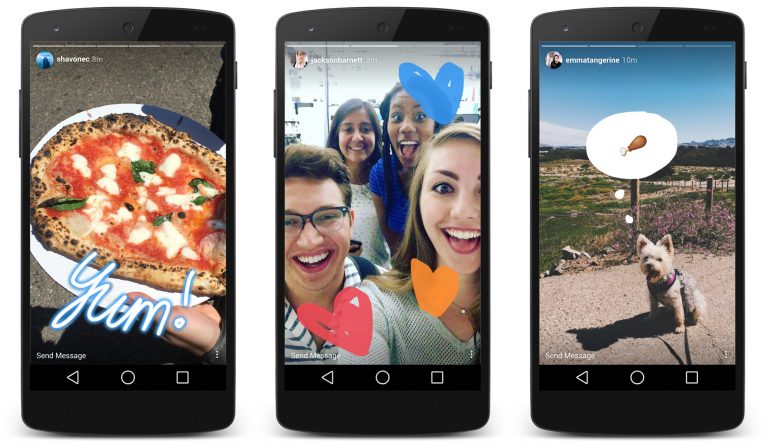
source: TechCrunch
You can also view your top posts insights, just by tapping the see more link next to top posts and the top six posts from the past seven days sorted by impressions. The tool also allows you to see followers insights. Back on the main Insights page for your account, scroll down to the Followers chart of times when your followers are on Instagram. Also, if you’re running paid Instagram ads, the Promotions section of the main Insights screen gives you relevant stats on your campaigns.
Socialbakers
With Socialbakers, you can get a free report on your most popular Instagram photos, filters, and hashtags, and all of your interactions with followers. The most useful sections are the most liked and most commented posts because this information can help inform the types of images you use in future Instagram posts.
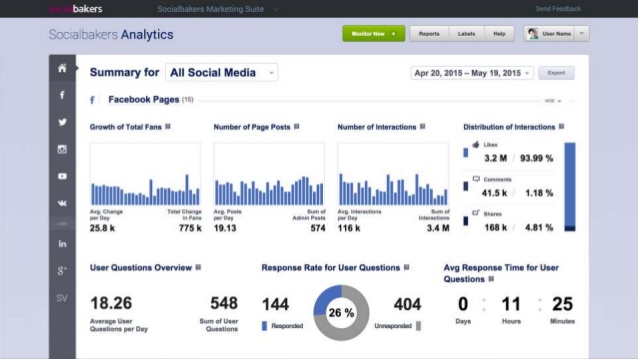
To get your free report, go to Socialbakers’ Free Instagram Analytics Tool and click Login With Instagram.
Simply Measured
Simply Measured offers a free Instagram report for users with up to 25,000 followers. The stats and insights are presented clearly and will help inform your Instagram posting strategy. The report lets you quickly see what has worked well in your Instagram marketing, so you can apply these insights to future posts. To get started, type your Instagram account name in the text box and click Authenticate With Any Instagram Account. Then log in and authorize Simply Measured to access information from your Instagram account. When you receive your report, you’ll find three tabs of information: Charts, Scorecard, and Appendix. The buttons in the top-right corner of the screen let you download the report to Excel or export it to PowerPoint.
On the Charts tab, you can view a wealth of insights about your most engaging posts and average engagement per post. Moreover, the Engagement chart shows Instagram engagement over time. See total engagement, engagement as a percentage of followers, and information on likes and comments your photos and videos received.
You can also examine the Scorecard (it gives you some basic stats about your Instagram account) and Appendix Tabs (check out a table of your top posts sorted by highest engagement with the date of the post, type, likes, comments, and total engagement – likes and comments).
It offers a free Instagram account checkup to assess how you’re doing on the network. While the report isn’t as comprehensive as some others, it offers handy nuggets of data for marketers. It helps you determine the best time to post, which hashtags to use, and what content to post more (or less) of. It also highlights your top followers and reminds you to engage with them. To access your free report, click Start Your Checkup on the home page and then sign up for a Union Metrics account.
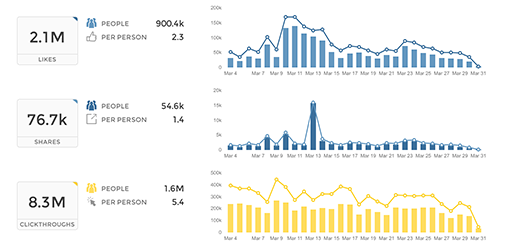
You can view the number of posts by day. Use the icons in the top-right corner of the page to share, print, or download your report. Scroll down to examine more stats with recommendations from Union Metrics, such as the best time and day to post. You can also view stats and visuals for your top-performing posts. If you click the circles on the hashtag report, you can see more information about the hashtags, which is a handy feature.
Squarelovin
With Squarelovin, you can get free basic Instagram analytics. The Optimization section offers insights that help inform Instagram posting. The “worst times to post” information is especially valuable. First, you’ll need to sign up for a Squarelovin account. On your dashboard, you can view high-level stats and access additional analytics screens. On the Postings tab, you’ll get information on your post history and top posts. It also shows your posts by year and month and day and time. The Engagement tab shows information on likes and comments, and highlights the top liked and top commented posts. The Optimization tab shows the best time and day to post on Instagram, but also the worst times to post on specific days.
If you use different filters on Instagram, you can also view the impact of those filters. Moreover, the report lets you see all of the Instagram hashtags you’ve used next to a list of the most popular hashtags. You can quickly see if you’re using top hashtags or if you need to rethink your hashtag strategy.
Understanding whom your Instagram fans are and what content they engage with and when will give you ideas for future content to share on the network.


